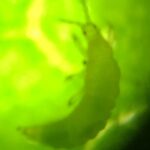I am often asked about using chlorinated water with Recharge and years ago I did some tests with Fort Collins Tap water and was surprised to find that there was little to no difference in the overall soil microbe count between the tap water and the RO water. As far as chloramines go they react similar in the soil as chlorine and the levels of either in municipal water supplies are not high enough to affect the long term soil microbe population.
Our friends over at Colorado State University in my hometown of Fort Collins Colorado were nice enough to help me answer the question of “Can I use tap water with Recharge, or any soil microbe package or compost for that matter”. I hope you find this information interesting. To find out if your Municipality uses Chlorine or Chloramines in your tap water check the list here.
This information was originally published in: CSU Planttalk Colorado
Impact of Watering Gardens with Chlorinated Water
Many water providers add chlorine to drinking water to keep it clean for human consumption. Chlorine prevents bacterial growth in water distribution systems. Many residents use chlorinated water to irrigate their lawn and garden. If chlorine is added to drinking water to kill bacteria, what impact does it have on beneficial soil microorganisms? Does it kill beneficial organisms in compost piles, too? Researchers have found that chlorinated drinking water may kill a number of microorganisms in soil or a compost pile. However, their reproduction rate is so rapid that populations rebound in a short time. Under normal conditions, chlorinated water will not threaten microorganism populations. Microorganisms reproduce rapidly. In one study, researchers continuously applied highly chlorinated water to soil for 126 days. Two days after they stopped, the soil microorganism populations reached pretreatment levels at all depths of soil.
One reason chlorinate water has little impact is that chlorine binds to soil particle surfaces. This immobilizes chlorine and reduces its ability to kill microorganisms. The organisms in the topmost surface of soil or a compost pile may be affected after irrigation but as the water moves downward little chlorine remains. In one study, researchers found that water chlorinated at 5 parts per million killed organisms only in the top half inch of soil. Organisms deeper than one half inch were thriving.
The amount of chlorine in drinking water is quite low. In order to kill soil microorganisms to 6 inch soil depth, water containing 65 parts per million of chlorine was required in one study. Drinking water usually contains much lower chlorine levels. For example, Colorado Springs Utilities water contains between 0.05 to 0.90 parts per million of chlorine, 70 times below the threshold level.







Could you tell us what are safe levels of chloramines or chlorine for a soil microbe population (in PPM form please)? My area uses anywhere from .005-3.8ppm of chloramines. This is in response to the following line:
“…and the levels of either in municipal water supplies are not high enough to affect the long term soil microbe population.”